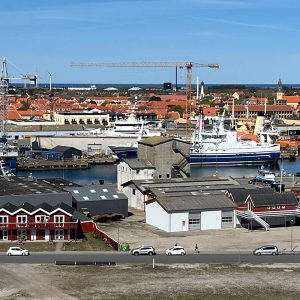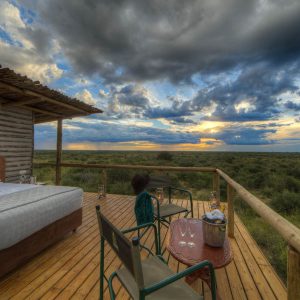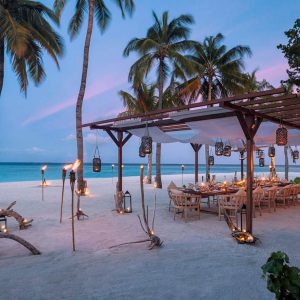Around 670,000 Brits visit Australia every year and nearly all of them fly.
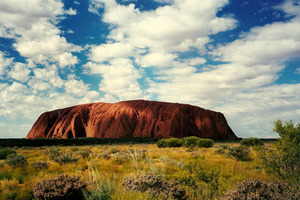 Australia is a country, a continent and the world’s largest island, no matter how it’s described it is a land of superlatives. Uluru (Ayres Rock) and the Great Barrier Reef are World Heritage icons, wildlife is both weird and wonderful from the duck-billed platypus to kangaroo and koala not forgetting the host of others that might sting or eat you. Then there’s the enviable ocean-side lifestyle of its great cities, but there’s also skiing, luscious vineyards, probably the biggest and best beaches in the world and of course deserts, tropical rainforests and wetlands the size of small countries.
Australia is a country, a continent and the world’s largest island, no matter how it’s described it is a land of superlatives. Uluru (Ayres Rock) and the Great Barrier Reef are World Heritage icons, wildlife is both weird and wonderful from the duck-billed platypus to kangaroo and koala not forgetting the host of others that might sting or eat you. Then there’s the enviable ocean-side lifestyle of its great cities, but there’s also skiing, luscious vineyards, probably the biggest and best beaches in the world and of course deserts, tropical rainforests and wetlands the size of small countries.
The 9,008 mile journey is long haul plus, too long for many people and too time consuming for a typical annual holiday break. The prospect of travelling to the other side of the world can be a daunting prospect, so what’s the best way to get there?
This April sees Qantas launch the first non-stop scheduled flights from the UK to Australia, Perth in Western Australia to be precise so many people will still have to change planes for east coast destinations. The 9,008 mile non-stop flight will take around 17 hours on-board a B787-9 Dreamliner. This 236-seat aircraft will be configured for business, premium economy and regular economy seating.
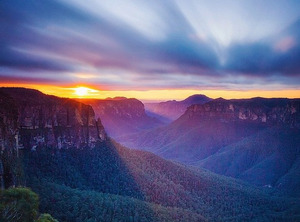 Travelling 17 hours in a business class seat will be far from enjoyable for most people but in an economy seat it could be unbearable. Nevertheless the Dreamliners I have previously flown on have been my best economy travel experiences, although none have been longer than 8 hours. There’s less engine noise, they’re more spacious and the entertainment systems really are entertaining. Ticket prices have not yet been announced but the new non-stop route will certainly cost more than a traditional ticket
Travelling 17 hours in a business class seat will be far from enjoyable for most people but in an economy seat it could be unbearable. Nevertheless the Dreamliners I have previously flown on have been my best economy travel experiences, although none have been longer than 8 hours. There’s less engine noise, they’re more spacious and the entertainment systems really are entertaining. Ticket prices have not yet been announced but the new non-stop route will certainly cost more than a traditional ticket
If time is at a premium the non-stop flight might be a great option but there’s a lot to be said for the traditional kangaroo routes to Oz. Making one or two stopovers breaks the journey into more manageable chunks with the added bonus of getting to see some exotic parts of the world on-route.
On flights to Australia I’ve stopped off in the Middle East (3,417 miles), Bangkok (5,930miles), Hong Kong (5,993miles), and Singapore (6,741 miles) usually for a couple of days and the Far East stopovers have all been fascinating city breaks.
Flying options
These Far Eastern destinations are very different and each has its unique charms.
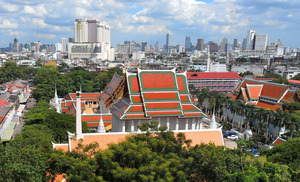 Bangkok is vast and sprawling with chaotic traffic but is usefully laid out in distinct Districts. The Rattanakosin District by the Chao Praya River has the Royal Palace and is where long-tailed river boats take visitors to spectacular Buddhist temples and the famous floating market. If your children or grandchildren have been away backpacking you may have heard of the Khao san Road in the Banglamphu District, it’s well worth a fleeting visit.
Bangkok is vast and sprawling with chaotic traffic but is usefully laid out in distinct Districts. The Rattanakosin District by the Chao Praya River has the Royal Palace and is where long-tailed river boats take visitors to spectacular Buddhist temples and the famous floating market. If your children or grandchildren have been away backpacking you may have heard of the Khao san Road in the Banglamphu District, it’s well worth a fleeting visit.
Bangkok’s notoriously seedy nightlife and sex bars are neatly kept within the Patpong district so unless you seek them out you are unlikely to stumble across anything unsavoury. This notorious district also has a famous night market selling all and sundry, especially fake branded goods, great for cheap gifts, providing you are good at haggling.
The River Kwai is only a short train ride to Kanchanaburi. To anyone with a WWII interest in the Far East the museum is an amazing fund of knowledge about the people and what really happened on the Death Railway. The adjacent well-kept war grave memorial garden is a moving sight.
But if you want to stay a bit longer and relax with some sand and warm sea it is easy and cheap to fly down to some of the islands, like Koh Samui, in the South China Sea.
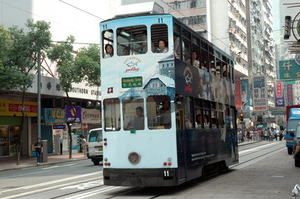 Hong Kong is many things – East meets West, China-lite, futuristic cityscape yet with plenty of Oriental culture and remnants from colonial times.
Hong Kong is many things – East meets West, China-lite, futuristic cityscape yet with plenty of Oriental culture and remnants from colonial times.
Hong Kong Island is across Victoria harbour from the mainland and the iconic White Star ferry is the way to cross it, although you could use the smart underground railway. The funicular climbing to the top of Victoria Peak is a must for a rare bit of open space and spectacular views on a clear day. The Island has fabulous old fashioned double decker trams and you can take one to the races at Happy Valley or take the half mile of outdoor escalators up to different levels of the city.
There are quite a few pubs on the Mid levels and the food is extraordinarily good from simple Dim Sum and spicy noodles to excellent Sushi bars and Michelin starred restaurants. Hong Kong is still a top place to get a hand made suit in record time for less than an off the peg job at home; I bought three handmade silk lined suits, matching shirts and ties for £250, although that was some years ago.
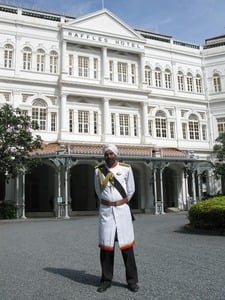 The first thing everyone notices when arriving in Singapore is that Changi really is the best airport in the world. Routinely voted ‘best airport’ – because you can always find a seat which includes armchairs and sofas, there are free computers and gadget charging points, a children’s play area, cinema, a snooze lounge, a wonderful rooftop bar and restaurant, orchid and butterfly gardens, a grand piano player and a rooftop swimming pool. Doesn’t sounds much like Heathrow does it?
The first thing everyone notices when arriving in Singapore is that Changi really is the best airport in the world. Routinely voted ‘best airport’ – because you can always find a seat which includes armchairs and sofas, there are free computers and gadget charging points, a children’s play area, cinema, a snooze lounge, a wonderful rooftop bar and restaurant, orchid and butterfly gardens, a grand piano player and a rooftop swimming pool. Doesn’t sounds much like Heathrow does it?
The second thing you’ll notice is how clean and tidy the city is, it’s less crowded than Hong Kong, much cleaner than Bangkok and the people are undoubtedly more polite. It is surprisingly green, has Chinese and Indian ethnic quarters, yet is ultra modern in places with impressive waterfront entertainment.
Raffles hotel in Singapore gets my vote as the best hotel in the world. Fabulously colonial in style and appearance, it’s definitely worth a stay if you can afford it. If not, visit for its history, elegance, perhaps something to eat at the Tiffin restaurant or at least an original Singapore sling. Lots of refurbishment is going on during 2017 so Raffles will not be at its best until 2018.
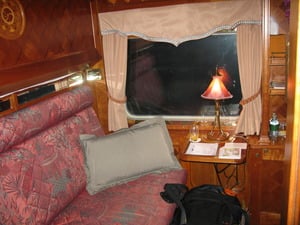 The Eastern and Oriental Express links Bangkok with Singapore and is a fabulous luxury treat that’s half the price of the European Oriental Express from London to Venice.
The Eastern and Oriental Express links Bangkok with Singapore and is a fabulous luxury treat that’s half the price of the European Oriental Express from London to Venice.
But flying is not the only route to Australia, providing you are not in a rush and have an adventurous spirit. In 2009 I travelled from London to Sydney by train. Quite a few different trains to be precise and one short flight across the sea from Singapore to Darwin.
Every time I’ve flown to Australia I felt disappointed about travelling half way around the world and missing out on so many amazing places, tantalisingly out of sight below the clouds. At my age I no longer wanted to travel overland by some uncomfortable, bruising or potentially hazardous route and my experience of trains told me they are invariably more comfortable than most other forms of transport.
I spent 3 months meandering slowly through 13 countries stopping off whenever the fancy took me. If I had rushed I could have made the overland trip in about 3 weeks but that made no sense as I wanted to experience as many lands as possible along the way.
My overland route
I took the Eurostar to Brussels, then on to Cologne and spent my first night on a sleeper train to Warsaw. Onwards through Poland to Vilnius in Lithuania where I took another sleeper train to St Petersburg. After a few days a high speed train took me to Moscow where I boarded a trans-Siberian train to Beijing. After several stop-offs and a week in Mongolia I arrived in Beijing a month after leaving London.
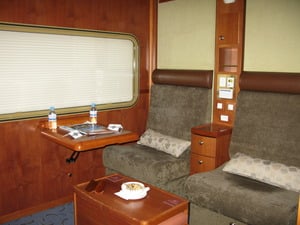 Travelling south through China I eventually arrived at Hanoi in northern Vietnam. Hopping on and off the Reunification Express I travelled the length of Vietnam, eventually arrived at Ho Chi Minh City (Saigon) and then made my way to Phnom Penh in Cambodia. From the magnificent lost city of Angkor I travelled on to Bangkok and took the luxurious Eastern and Oriental Express south to Singapore.
Travelling south through China I eventually arrived at Hanoi in northern Vietnam. Hopping on and off the Reunification Express I travelled the length of Vietnam, eventually arrived at Ho Chi Minh City (Saigon) and then made my way to Phnom Penh in Cambodia. From the magnificent lost city of Angkor I travelled on to Bangkok and took the luxurious Eastern and Oriental Express south to Singapore.
Unfortunately, passenger and cargo ships no longer cross the Java and Timor Seas to Australia so I had to fly to Darwin on Australia’s northern coast. A two day trip south on the Ghan, via Alice Springs, took me to Adelaide and a further two days east on the Indian-Pacific finally brought me to Sydney.
There’s no price for a one-off rail journey like this because it depends on the class of travel, where you eat, how many nights accommodation and the grade of hotel chosen. The excellent independent website, The Man in Seat Sixty-One was an invaluable asset in my planning.
Over the sea
The days of the ‘£10 Pom’ passenger ships from England to Australia have long gone but if you want to travel by sea it can still be done. There are freighters leaving Southampton most months and occasional cruise ships that are relocating to Australian waters or will let you do a half of a around the world cruise.
Freighters travelling east depart from the UK, typically call at Genoa, Egypt, through the Suez canal, stopping at Reunion before calling at Freemantle, Melbourne and Sydney.
Freighters travelling west are not so convenient sometimes requiring a flight to Philadelphia with ports of call at Charleston, Catagena, through the Panama canal and on to Auckland in New Zealand before docking at Sydney and Melbourne
Freighters are not as cheap as you might imagine and they’re for passengers that are very self-sufficient as there may only be 5 or 10 cabins and no organised entertainment. However, full board is usually included and cabins have a sitting area, refrigerator, desk, wardrobe, sofa, bathroom (WC/shower/washbasin) and air conditioning; no balconies and sometimes limited sea views.
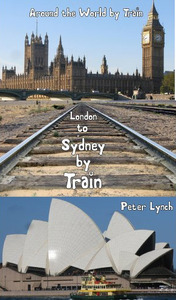 Freighter prices cost around £90 per day and a trip to Australia is likely to be around 45 days depending on the route and the number of ports of call.
Freighter prices cost around £90 per day and a trip to Australia is likely to be around 45 days depending on the route and the number of ports of call.
Cruise ships making around the world trips don’t usually advertise one way trips to Australia but they will often allow a part passage ending in Australia although clearly not if they can sell all their cabins for the full trip. Both types of ship provide full board but the cruise option obviously caters for passengers rather than cargo so will offer more dining options, leisure facilities and generally be more entertaining. P&O’s Arcadia cruise ship spends 44 days (Jan/Feb) island hoping across the Atlantic and Pacific to Sydney with prices starting at £4,999, which also includes a return flight to the UK.
Without doubt, the cheapest and quickest way to Australia is to fly. It is unlikely to be an enjoyable experience in economy but at least it will be over in one day and that will usually suit most people. If you’ve got the time you can drift around the world with coastal city excursions on cruise ships (but not on freighters). However, if you’re a bit more adventurous, want to experience more than tourist port excursions, meet people rather than tour guides and discover different cultures with total flexibility – trains could be the way to go.
If you want to read about my rail journey to Australia, find out what I did and see if you might enjoy it, take a look at my Kindle book – Overland from London to Sydney on Amazon.
Find a Holiday to Australia.

